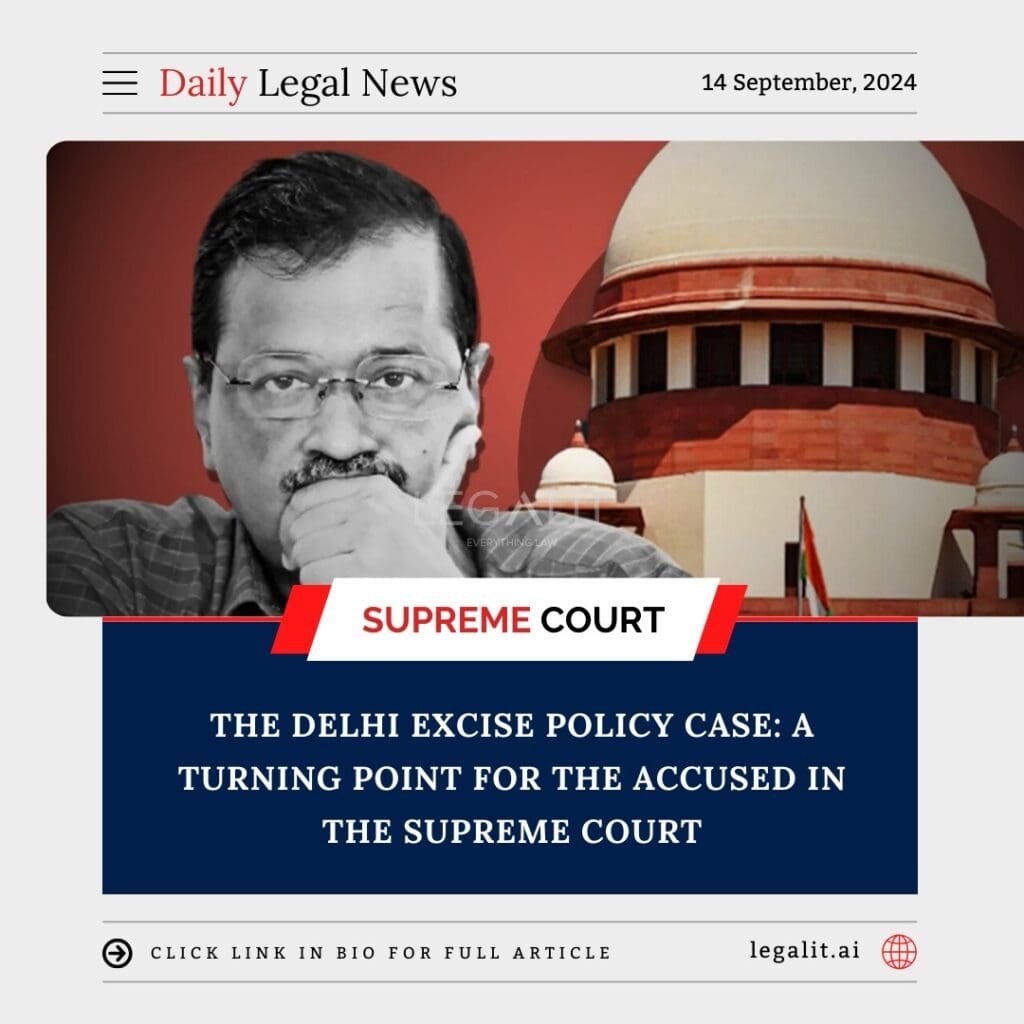
The Delhi Excise Policy case has been a roller-coaster of legal developments, with the narrative shifting dramatically for the accused as the case moved through the Supreme Court. What began as a probe into alleged irregularities in the Delhi government’s liquor policy evolved into a courtroom drama that continues to grip public attention. In this blog, we will take a closer look at how the situation turned for the accused and the key factors that contributed to this significant legal shift.
Background of the Case
The Delhi Excise Policy 2021-22 was introduced with the aim of boosting revenue, curbing black market sales, and offering more transparency in the distribution and sale of alcohol in the capital. However, the policy soon came under scrutiny when allegations of corruption, favoritism, and undue benefits being granted to private players emerged. Several high-profile individuals, including politicians and bureaucrats, were named in connection with the case.
The Enforcement Directorate (ED) and the Central Bureau of Investigation (CBI) launched investigations, resulting in multiple arrests. The central issue was whether the excise policy was used as a cover for manipulating the system in favor of specific vendors, leading to massive financial irregularities.
Initial Stance: Accusations and Arrests
In the initial phase of the investigation, the case seemed grim for the accused. The allegations were grave, ranging from money laundering to bribery, and the evidence presented by investigative agencies appeared robust. Many accused were arrested and remanded in judicial custody, as the prosecution built a narrative around a well-coordinated conspiracy to siphon off public funds under the guise of policy implementation.
Public sentiment also played a role, as media reports sensationalized the case, painting a picture of rampant corruption and political manipulation. As a result, it seemed inevitable that the accused would face severe legal repercussions.
The Legal Shift: Supreme Court Intervention
As the case progressed, the Supreme Court became the battleground where the accused saw a glimmer of hope. Several key developments in the court turned the tables in their favor:
- Questioning the Legality of Investigations: The defense questioned the legality of the investigation process itself, highlighting procedural lapses by the ED and CBI. Arguments were made that the accused were being held without solid evidence of wrongdoing, based on assumptions and circumstantial evidence.
- Lack of Concrete Evidence: As the hearings progressed, the Supreme Court observed that some of the accusations lacked substantial evidence. This led to the weakening of the prosecution’s case, as the burden of proof rested on demonstrating clear financial gains from the policy to the accused.
- Rights of the Accused: The Supreme Court took a critical stance on the prolonged detention of the accused without trial, citing the principle of “innocent until proven guilty.” It emphasized the importance of granting bail in cases where the evidence did not justify continued imprisonment, especially when the trial seemed far from conclusion.
- Public Interest vs. Individual Rights: The Court also struck a balance between public interest and the rights of the individuals involved. While acknowledging the seriousness of the allegations, the justices reiterated that the accused had constitutional rights that could not be disregarded in the rush to convict.
Impact of the Supreme Court’s Observations
The Supreme Court’s intervention marked a significant turning point. Several of the accused, who were previously denied bail, were either granted relief or had their cases reconsidered. The Court’s scrutiny of the investigation’s integrity not only provided temporary relief to the accused but also set the stage for a more comprehensive review of how such cases are handled by investigative agencies.
This shift also had political ramifications, as the legal developments were closely watched by different political factions. The ruling, particularly on granting bail and questioning procedural lapses, became a talking point in larger discussions about accountability, transparency, and the use of investigative agencies for political purposes.
Conclusion: What Lies Ahead?
The tables may have turned for the accused, but the Delhi Excise Policy case is far from over. The Supreme Court’s observations have opened the door for more stringent scrutiny of the investigation process, but the final verdict is yet to be delivered. What this case highlights, however, is the importance of due process, fair trials, and the need for robust evidence in cases involving public officials and policies.
As the legal battle continues, the case serves as a crucial reminder of the delicate balance between law enforcement and the rights of individuals accused of corruption, with the ultimate outcome likely to have far-reaching implications for both Delhi’s governance and India’s broader legal landscape.